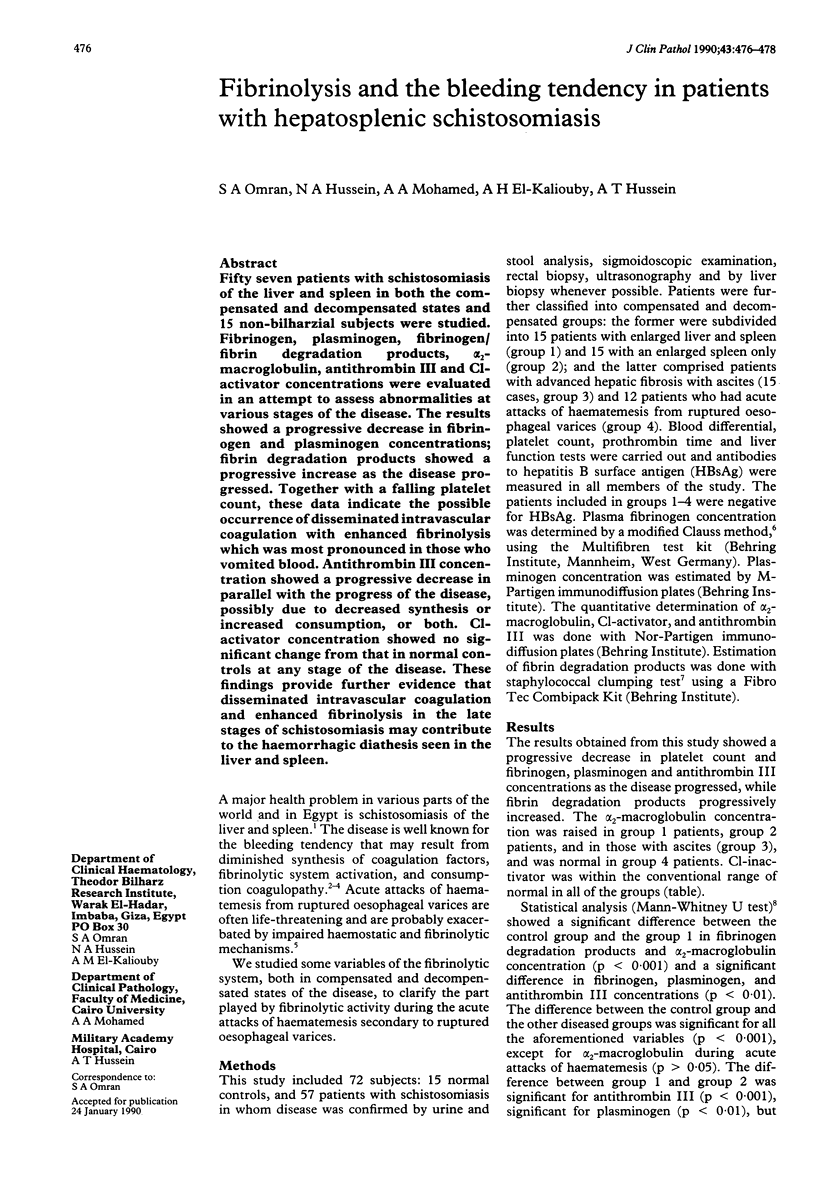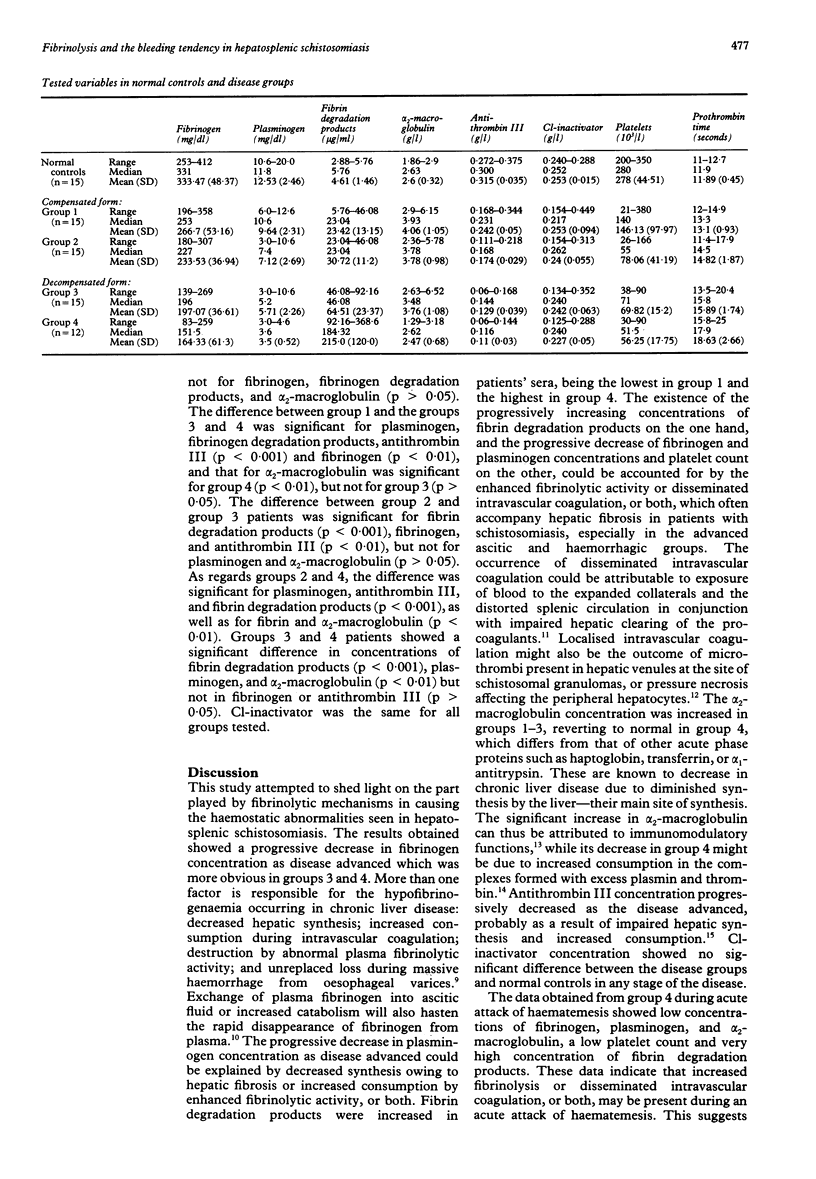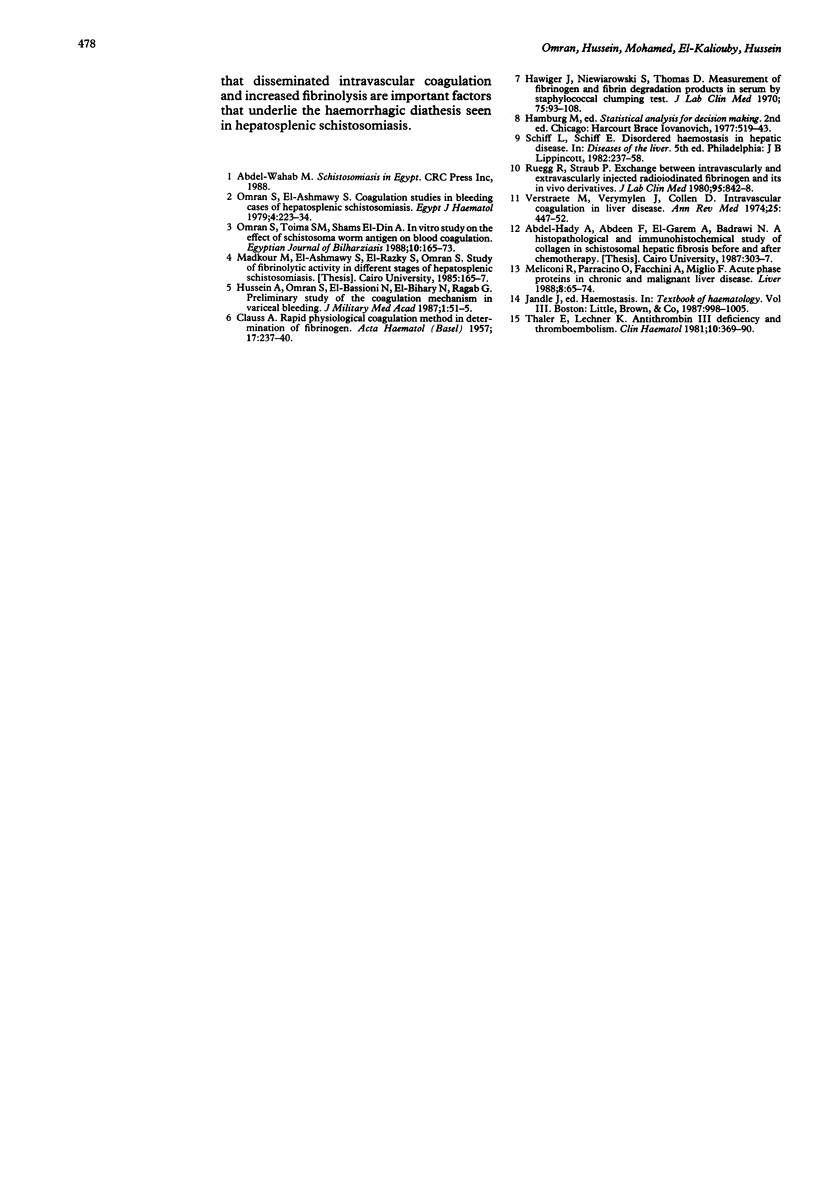Abstract
Fifty seven patients with schistosomiasis of the liver and spleen in both the compensated and decompensated states and 15 non-bilharzial subjects were studied. Fibrinogen, plasminogen, fibrinogen/fibrin degradation products, alpha 2-macroglobulin, antithrombin III and Cl-activator concentrations were evaluated in an attempt to assess abnormalities at various stages of the disease. The results showed a progressive decrease in fibrinogen and plasminogen concentrations; fibrin degradation products showed a progressive increase as the disease progressed. Together with a falling platelet count, these data indicate the possible occurrence of disseminated intravascular coagulation with enhanced fibrinolysis which was most pronounced in those who vomited blood. Antithrombin III concentration showed a progressive decrease in parallel with the progress of the disease, possibly due to decreased synthesis or increased consumption, or both. Cl-activator concentration showed no significant change from that in normal controls at any stage of the disease. These findings provide further evidence that disseminated intravascular coagulation and enhanced fibrinolysis in the late stages of schistosomiasis may contribute to the haemorrhagic diathesis seen in the liver and spleen.
Full text
PDF


Selected References
These references are in PubMed. This may not be the complete list of references from this article.
- CLAUSS A. Gerinnungsphysiologische Schnellmethode zur Bestimmung des Fibrinogens. Acta Haematol. 1957 Apr;17(4):237–246. doi: 10.1159/000205234. [DOI] [PubMed] [Google Scholar]
- Hawiger J., Niewiarowski S., Gurewich V., Thomas D. P. Measurement of fibrinogen and fibrin degradation products in serum by staphylococcal clumping test. J Lab Clin Med. 1970 Jan;75(1):93–108. [PubMed] [Google Scholar]
- Meliconi R., Parracino O., Facchini A., Morselli-Labate A. M., Bortolotti F., Tremolada F., Martuzzi M., Miglio F., Gasbarrini G. Acute phase proteins in chronic and malignant liver diseases. Liver. 1988 Apr;8(2):65–74. doi: 10.1111/j.1600-0676.1988.tb00970.x. [DOI] [PubMed] [Google Scholar]
- Rüegg R., Straub P. W. Exchange between intravascularly and extravascularly injected radioiodinated fibrinogen and its in vivo derivatives. J Lab Clin Med. 1980 Jun;95(6):842–856. [PubMed] [Google Scholar]
- Thaler E., Lechner K. Antithrombin III deficiency and thromboembolism. Clin Haematol. 1981 Jun;10(2):369–390. [PubMed] [Google Scholar]
- Verstraete M., Vermylen J., Collen D. Intravascular coagulation in liver disease. Annu Rev Med. 1974;25:447–455. doi: 10.1146/annurev.me.25.020174.002311. [DOI] [PubMed] [Google Scholar]


